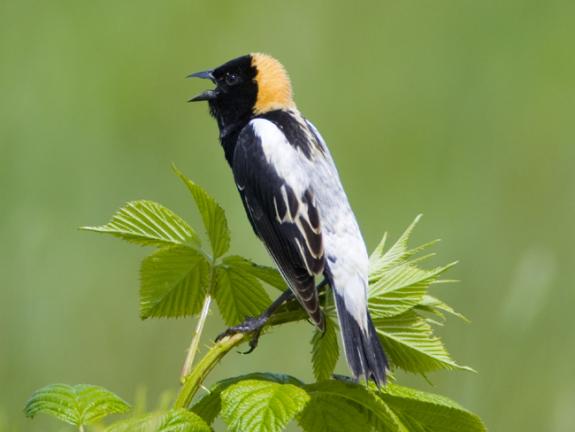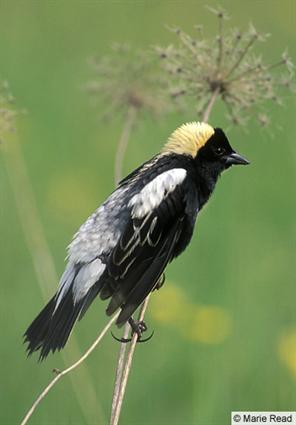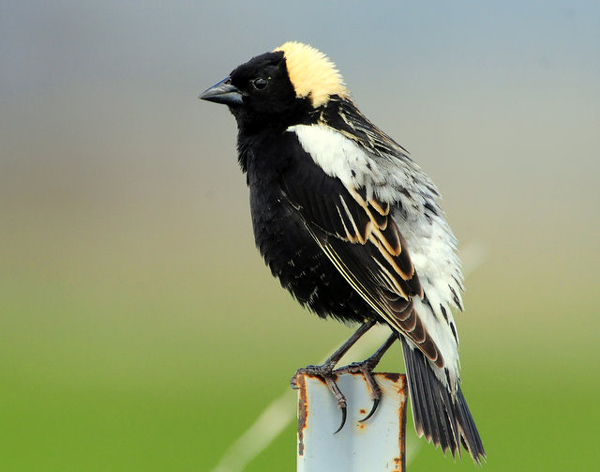
Dolichonyx oryzivorus
TAXONOMY
Fringilla oryzivora Linnaeus, 1758, South Carolina.
OTHER COMMON NAMES
French: Goglu de prй; German: Bobolink; Spanish: Charlatбn,
Triste-pia.
PHYSICAL CHARACTERISTICS
6–7 in (15–17.5 cm); female 0.9–1.6 oz (26.5–44.3 g), male 1–2
oz (28.5–56.3 g). Sexually dimorphic in color. Males black face
and underparts, light yellow on the back of head and nape, pale
grayish white rump, wings black with pale edges to some of the
feathers, white scapulars, and a white-tipped black tail. Males in
winter, females, and juveniles brown or yellow ochre, with a pale
stripe above the eye, streaked and mottled back, pale throat, and
varying amounts of streaking on the breast and flanks.
DISTRIBUTION
Breeds from southwestern Newfoundland west to central
British Columbia, south to central Colorado, northern
Missouri, and central Virginia. Winters in the pampas of
southwestern Brazil south to central Argentina.
HABITAT
Breeds in moist grassy meadows or old fields. Originally wintered
in grasslands and marshes, but now commonly is found
in rice fields.
BEHAVIOR
Territorial during the breeding season. Males defend a territory
with flight-songs, fights and chases. In migration and winter,
often occurs in large flocks.
FEEDING ECOLOGY AND DIET
Forage on the ground. Young are fed insects and other invertebrates.
Winter diet is mostly various grains and seeds.
REPRODUCTIVE BIOLOGY
Males are paired simultaneously with several females. Females
select the nest site and build the nest, which is an open cup of
woven grass and other vegetation, placed on the ground, often
at the base of a forb. Three to seven (commonly five) eggs are
laid from mid-May to mid-July. Incubation 12–14 days; fledging
at 10 or 11 days. Single brooded, but replacement clutches
may be produced.
CONSERVATION STATUS
Not threatened. Widespread and locally common, but numbers
declining in many areas. Destruction of suitable habitat in both
their wintering and breeding range may be affecting numbers.
SIGNIFICANCE TO HUMANS
It is considered an agricultural pest outside of its breeding
range.
Photo Gallery of - Bobolink




 Animalia Life
Animalia Life